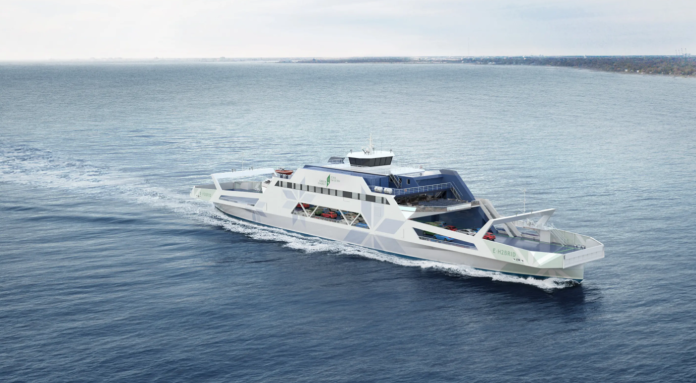Estonia’s State Fleet has announced procurement of an electric-hydrogen ferry, intended for use in Estonian waters on the Rohukula-Heltermaa route between the country’s large western Hiiumaa island and the mainland, and the Virtsu-Kuivastu route between the neighboring Saaremaa island and mainland, with the estimated cost of the tender being 40 million euros.
The ferry should be developed to be interchangeable between the Saaremaa and Hiiumaa routes but is initially planned as the main vessel for the Virtsu-Kuivastu route, scheduled to start operations in October 2026, according to the State Fleet.
The new ferry is to have the capacity to carry about 20 percent more cars, totaling nearly 200 passenger cars or 16 large trucks along with 50 cars. For passenger comfort, the vessel is planned to have an onboard restaurant with a galley, as well as a store, an extended relaxation area, and cabin spaces for the crew. The ferry must accommodate 700 passengers.
The ferry must be able to operate emission-free under normal conditions, with its primary energy source being electrical power, charged via a shore connection along with electricity generated on board by fuel cells using compressed hydrogen.
In addition to batteries and fuel cells, the vessel must be equipped with biodiesel generator backup units that can be used in harsh winter conditions or in case of failure of the previously mentioned main energy sources.
The ferry should have two cargo decks. It must be capable of carrying large and heavy cargo, as well as dangerous goods on its open car deck, and passenger cars on the lower car deck located below the main deck. In addition to the two cargo decks, the ferry must have one deck for passenger services, another for crew quarters, and a bridge deck.
Estonian Minister of Climate Kristen Michal said that the ferry procurement is a great example of contributing to economic development while preserving nature and keeping the Baltic Sea clean.
“Advancing ferry technology is necessary to improve the quality of connections for islanders and visitors. By using energy efficiently, we as a state, and as customers, get more value for every euro spent, in a more environmentally friendly way,” Michal said.
The manager of the ferry project Valentin Bratkov believes that the ferry’s energy efficiency can be maximized with vessel management technologies on board. In cooperation with scientists from the Estonian Maritime Academy of Tallinn University of Technology, a digital twin prototype will be created for the ferry.
Bratkov explained that the new ferry will have automated motion and decision support, meaning the ship can navigate between ports in a fully autonomous mode.
“This doesn’t mean the ferry will operate without a crew, but different functions such as navigation, engine room operations, or customer service, can be fully autonomous,” said Bratkov. The new ferry is also planned to be operable remotely.
Bids can be submitted until the morning of Jan. 17. The ship construction will be funded by the EU Modernization Fund and from carbon dioxide quota trading revenues.
Source: BNS
(Reproduction of BNS information in mass media and other websites without written consent of BNS is prohibited.)

